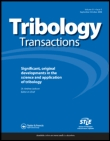
TRIBOLOGY TRANSACTIONS
Scope & Guideline
Charting New Territories in Tribological Research
Introduction
Aims and Scopes
- Tribological Properties and Mechanisms:
Research in this area investigates the fundamental properties of materials and their interactions under different conditions, focusing on wear mechanisms, friction coefficients, and surface modifications. - Lubrication Technologies:
This includes studies on various lubrication methods, including hydrodynamic, elastohydrodynamic, and solid lubrication, as well as the development of new lubricant formulations and additives. - Material Performance Under Tribological Stress:
Investigations into how different materials, including composites and alloys, perform under tribological conditions, including high temperatures and corrosive environments. - Surface Engineering and Treatments:
Research focused on surface modifications, coatings, and texturing techniques aimed at improving wear resistance, reducing friction, and enhancing overall tribological performance. - Advanced Testing and Simulation Techniques:
Development and application of novel experimental setups and computational models to better predict tribological behavior and performance in practical applications.
Trending and Emerging
- Nanotechnology in Lubrication:
There is a growing trend towards the incorporation of nanomaterials and additives in lubricants, which enhance performance characteristics and reduce wear. - Biomimetic and Bionic Surface Designs:
Research on surfaces inspired by biological structures is gaining traction, focusing on how these designs can improve tribological performance by mimicking natural systems. - Machine Learning Applications:
The application of machine learning and artificial intelligence for predicting wear rates and optimizing lubrication strategies is on the rise, showcasing the integration of data science with tribology. - Sustainability and Eco-Friendly Lubricants:
A shift towards environmentally friendly lubricants and materials is becoming prominent, driven by industry demands for sustainable practices and ecological considerations. - Advanced Characterization Techniques:
Emerging techniques for characterizing tribological behavior at the micro and nanoscale are increasingly featured, enhancing understanding of material interactions.
Declining or Waning
- Traditional Lubrication Studies:
Research focusing solely on traditional lubrication methods, such as mineral oils without additives, has decreased as researchers increasingly explore advanced lubricants and nanotechnology. - Conventional Material Studies:
There is a waning interest in studies solely on conventional materials without new modifications or composites, as the field shifts towards innovative materials and their tribological properties. - Static Friction Investigations:
Research centered around static friction, particularly in non-dynamic systems, has diminished in favor of dynamic and real-time friction assessments. - Basic Friction Models:
The use of simplified friction models without considering complex interactions and real-world conditions is decreasing, as more sophisticated approaches are being developed.
Similar Journals
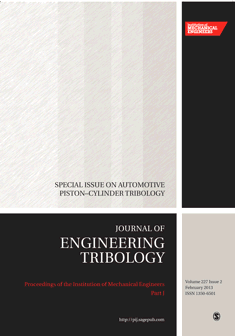
PROCEEDINGS OF THE INSTITUTION OF MECHANICAL ENGINEERS PART J-JOURNAL OF ENGINEERING TRIBOLOGY
Fostering collaboration in the pursuit of tribological breakthroughs.PROCEEDINGS OF THE INSTITUTION OF MECHANICAL ENGINEERS PART J: JOURNAL OF ENGINEERING TRIBOLOGY is a premier scholarly publication dedicated to the intricate field of tribology, which encompasses the study of friction, wear, and lubrication in mechanical systems. Published by SAGE Publications Ltd, this journal aims to advance the scientific understanding and application of tribological principles across various industries, particularly in mechanical engineering. With an impressive impact factor and classified in the Q2 and Q3 quartiles in its respective categories, it provides a vital platform for disseminating innovative research and technical advancements. The journal spans over a rich timeline from 1994 to 2024, signifying its longstanding contribution to the academic community. It invites original research articles, comprehensive reviews, and insightful case studies that push the boundaries of existing knowledge and foster collaborative efforts among researchers, professionals, and students in the field. For those engaged in mechanical engineering and materials science, the journal offers unparalleled access to cutting-edge research that can inform and enhance practical applications in the industry.
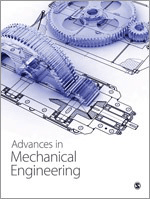
Advances in Mechanical Engineering
Pioneering Research for Tomorrow's Engineering ChallengesAdvances in Mechanical Engineering is a premier open-access journal published by SAGE Publications Ltd, dedicated to the advancement of theoretical and applied research in the field of mechanical engineering. With an ISSN of 1687-8132 and an E-ISSN of 1687-8140, this journal has been a vital resource for scholars and practitioners since its inception in 2009. Housed in the United States, it operates under a commitment to ensure free and immediate access to its high-quality content, enhancing collaboration and innovation across the global engineering community. With a noteworthy Q2 ranking in the mechanical engineering category and a solid Scopus rank placing it in the 59th percentile, the journal serves as an influential platform for cutting-edge research, theoretical advancements, and comprehensive reviews. As the field evolves, Advances in Mechanical Engineering continues to cater to the rigorous needs of researchers, professionals, and students, striving to transform knowledge into tangible engineering solutions. This journal's commitment to excellence makes it a significant contributor to the mechanical engineering field, encouraging dynamic discussions and implications for the future.

Tribology-Materials Surfaces & Interfaces
Unraveling the complexities of materials and interfaces.Tribology-Materials Surfaces & Interfaces is a leading journal dedicated to advancing the field of tribology, leveraging insights into materials, surfaces, and interface interactions. Published by SAGE Publications Inc in the United Kingdom, this journal plays a pivotal role in disseminating high-quality research, providing a platform for both foundational and applied studies in mechanical engineering and materials science. With an impact factor reflecting its significance, ranking in the third quartile for both Materials Science and Mechanical Engineering, it caters to a diverse audience including researchers, industry professionals, and students. Although it currently does not offer open access, the journal endeavors to periodically review and publish innovative studies that enhance understanding of tribological phenomena, thereby contributing to the development of advanced materials and engineering solutions. Since its inception in 2007, Tribology-Materials Surfaces & Interfaces has consistently presented cutting-edge findings, thereby cementing its position as an essential resource for anyone engaging in tribological research.

China Surface Engineering
Elevating materials science through collaborative insights.China Surface Engineering is a prominent academic journal dedicated to the field of materials science, with a specific emphasis on surfaces, coatings, and films. Published by the Chinese Association of Science and Technology (CAST), this journal serves as an essential platform for researchers, professionals, and students seeking to disseminate knowledge and advancements in surface engineering technologies and innovative applications. With its ISSN 1007-9289 and E-ISSN 1007-9289, it has established a distinct presence since its convergence in 2016, and continues to evolve in the rapidly advancing materials science landscape through to 2024. Although currently categorized in the Q4 quartile of its field, with a Scopus ranking of #103 out of 132 in Surfaces, Coatings and Films, the journal plays a critical role in contributing to the discourse surrounding surface treatment and modification, fostering advancements that are pivotal for industrial applications. As an avenue not only for knowledge transfer but also for collaboration among scientists worldwide, China Surface Engineering is crucial for anyone engaged in research or practical applications in this domain.
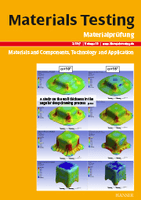
Materials Testing
Exploring the Frontiers of Materials ScienceMaterials Testing is a renowned journal published by Walter de Gruyter GmbH, serving the global scientific community in the fields of Materials Science, Mechanical Engineering, and Mechanics of Materials. With an ISSN of 0025-5300 and an E-ISSN of 2195-8572, this journal has been a significant contributor to the discourse on material performance, testing methodologies, and engineering innovations since its inception. The journal is recognized for its rigorous peer-review process and holds a commendable Q2 quartile ranking in multiple categories for 2023, showcasing its impact and relevance in the field. With open access options available, Materials Testing aims to disseminate valuable research findings and practical insights that drive advancements in technology and materials applications. By addressing the latest challenges and developments within the field, this publication serves as an essential resource for researchers, professionals, and students alike, fostering a deeper understanding of material properties and testing techniques.

PROCEEDINGS OF THE INSTITUTION OF MECHANICAL ENGINEERS PART C-JOURNAL OF MECHANICAL ENGINEERING SCIENCE
Driving progress in mechanical engineering through shared knowledge.PROCEEDINGS OF THE INSTITUTION OF MECHANICAL ENGINEERS PART C - JOURNAL OF MECHANICAL ENGINEERING SCIENCE, published by SAGE Publications Ltd, stands as a pivotal resource in the field of mechanical engineering, encompassing a wide array of topics from advanced materials to fluid dynamics and system design. With an impact factor reflective of its esteemed reputation, as indicated by its Q2 ranking in the Mechanical Engineering category, this journal serves as a vital forum for researchers, practitioners, and students alike. The journal boasts a rich history, converging research from 1983 to 2024, showcasing innovations and advancements that shape the mechanical engineering landscape. Although it is not an open-access publication, the insights and studies published herein provide invaluable contributions to the engineering community, fostering knowledge exchange and collaborative advancements. Researchers seeking a platform for their pioneering work will find Part C an ideal venue to disseminate their findings and engage with peers in this dynamic field.

Friction
Fostering Innovation through Open Access ResearchFriction is a renowned peer-reviewed open-access journal published by TSINGHUA UNIVERSITY PRESS, dedicated to the intricate field of Mechanical Engineering and the specialized areas of Surfaces, Coatings, and Films. Since its inception in 2013, the journal has rapidly ascended to prominence, achieving Q1 rankings in both categories as of 2023, thereby securing its place as a leading resource for researchers and professionals alike. With its impressive Scopus rankings—26th out of 672 in Mechanical Engineering and 10th out of 132 in Materials Science—the journal exemplifies outstanding academic rigor and contribution to its field. As part of its commitment to accessibility, Friction offers open access to all published articles, ensuring that groundbreaking research is freely available to scholars and practitioners worldwide. By bridging theoretical insights with practical applications, the journal aims to foster innovation and collaboration within the engineering community and beyond.
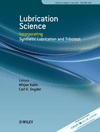
Lubrication Science
Driving collaboration in the field of tribology.Lubrication Science is a premier journal dedicated to advancing the field of tribology, focusing on the study and application of lubricants, lubrication methods, and their impacts in materials science. Published by WILEY, this journal serves as a critical platform for researchers and industry professionals alike, providing innovative insights and findings since its inception in 1988. With an ISSN of 0954-0075 and E-ISSN 1557-6833, the journal has established a commendable reputation in the academic community, holding a Q2 ranking in Materials Chemistry and a Q3 ranking in Surfaces, Coatings and Films as of 2023. Despite its recent emergence as a competitive publication, evidenced by its 47th percentile rankings in both subfields, Lubrication Science continuously seeks to bridge gaps in knowledge and foster collaboration among researchers. Its commitment to quality research is reflected in its detailed reviews and timely publication of original research articles. Although not an open-access journal, it remains an essential resource for anyone looking to keep abreast of the latest advancements and applications in lubrication technology, making significant contributions to sustainability and innovation in materials science.
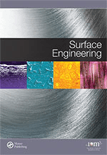
SURFACE ENGINEERING
Elevating Knowledge in Surface Coatings and BeyondSURFACE ENGINEERING, published by SAGE Publications Inc, is a premier international journal dedicated to the advancement of knowledge in the fields of material surface science and engineering. With an ISSN of 0267-0844 and E-ISSN 1743-2944, this esteemed journal has been a critical resource since its inception in 1985, and continues to thrive through 2024. Recognized for its impactful contributions, SURFACE ENGINEERING achieves notable rankings in several categories including Q1 in Conservation and Q2 in key areas such as Condensed Matter Physics and Materials Chemistry. The journal serves a diverse audience of researchers, professionals, and students, providing them with insightful research articles, reviews, and technological developments that drive innovation in surface coatings, materials chemistry, and related disciplines. Although the journal follows a traditional subscription model, it remains an essential platform for disseminating crucial findings and fostering collaborations within the scientific community.

SURFACE REVIEW AND LETTERS
Catalyzing Progress in Material ScienceSURFACE REVIEW AND LETTERS, published by WORLD SCIENTIFIC PUBL CO PTE LTD, is a pivotal journal in the fields of condensed matter physics, materials chemistry, and surfaces and interfaces. With an ISSN of 0218-625X and an E-ISSN of 1793-6667, this journal serves as a platform for cutting-edge research and innovative developments from 1996 to 2024. Despite its classification in the Q4 and Q3 quartiles for various categories in 2023, SURFACE REVIEW AND LETTERS emphasizes the importance of inter-disciplinary collaboration and the rapid dissemination of valuable insights, making it an essential resource for researchers and professionals eager to stay at the forefront of material science. Although currently lacking an open access option, the journal invites a wide range of submissions—fostering knowledge sharing among scholars and contributing to the advancement of the scientific community. Aspiring authors and readers will benefit from the opportunity to engage with diverse studies and methodologies, underscoring the journal's commitment to excellence in materials research.